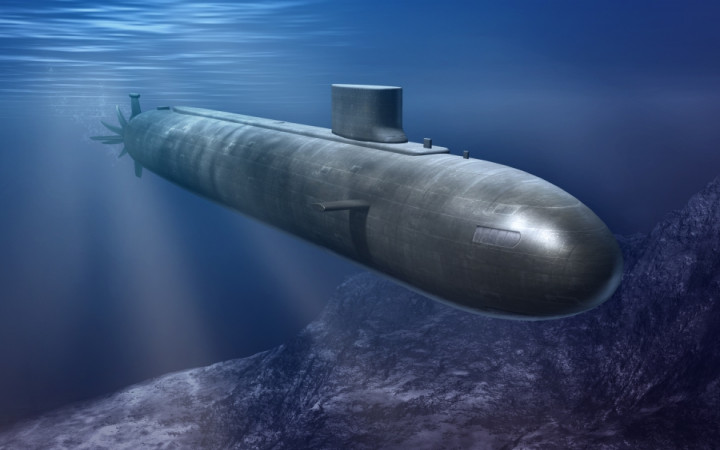Today’s Wonder of the Day was inspired by mason. mason Wonders, “how submarines work” Thanks for WONDERing with us, mason!
Like other ships, a submarine can float because the weight of the water that it displaces is equal to the weight of the ship. This means the pressure of the submarine pressing down on the water is the same as the pressure of the water pushing up on the ship.
This phenomenon is called buoyant force. Buoyant force works the same way on a submarine, a pirate ship at sea, or a rubber duck floating in your bathtub.
A submarine is different from other ships, though, because it can control its buoyancy. This means the submarine captain can decide when to sink down into the ocean or come back up to the surface.
In order to control buoyancy, the submarine relies on special tanks that can be filled with water or air. To return to the surface, the tanks are filled with air. This makes the submarine less dense than the water around it, causing the sub to float to the surface.
When the captain decides it's time to take a dive, the air is released through a vent, and the tanks are flooded with water. This makes the submarine denser than the surrounding water, which causes it to sink.
A supply of air is kept on board to fill and refill the tanks. In an emergency, the tanks can be filled with high-pressure air to return the crew and the vessel to the surface very quickly.
Living on a submarine might sound like fun, but there are challenges to life under the sea. The three biggest problems involve maintaining air quality, fresh water supply, and temperature.
The air we breathe is made up of four gases: nitrogen, oxygen, argon, and carbon dioxide. When we take a big breath of air, our bodies use up the oxygen. When we breathe out, we exhale carbon dioxide. We don't do anything with nitrogen or argon.
Imagine you are about to be sealed in a giant tube with all your friends. When the tube is sealed, all the air available to you is now inside. There's just one problem: no air can get in or out. A submarine works the same way.
In order to keep people breathing (and alive!), three things must happen. First, oxygen must be pumped into the vessel as the crew uses it up by breathing. Oxygen is typically supplied to the submarine from pressurized tanks. A computerized system monitors oxygen in the air and releases fresh oxygen as its needed by the crew.
Next, exhaled carbon dioxide must be removed or it becomes a toxin. Machines called “scrubbers" use soda lime to trap carbon dioxide, removing it from the air.
Finally, exhaled moisture from breathing must be removed to prevent condensation on the interior of the ship or equipment. This is done with dehumidifiers.
As you know, humans can't live long without water. Since submarines don't have access to municipal water systems or wells, they have to find a way to maintain a fresh water supply for drinking.
Most ships have special equipment that can remove the salts from seawater to turn it into fresh drinking water. This process is called distillation. Some submarines can produce up to 40,000 gallons of fresh water per day. It is used for everything from cooling electronic equipment to cooking and showering.
Since submarines are metal, they conduct heat from inside the ship to the cooler surrounding water. In order to keep the crew comfortable, submarines also need heating systems.




